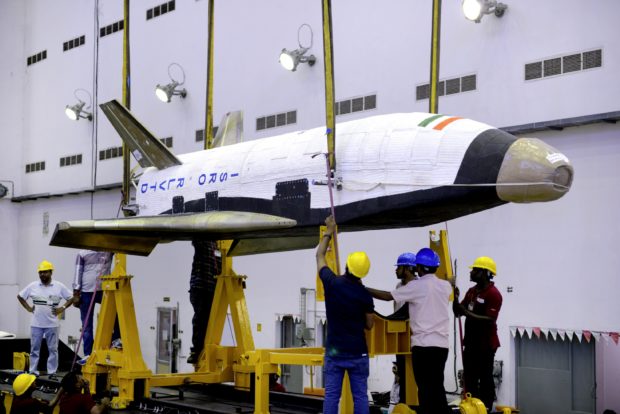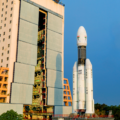We Know ISRO has made its intent clear on an Indian Reusable Rocket . After the SpaceX Falcon Heavy launch ISRO chief K Sivan told the world they have been working on reusable rocket stages since a few years .
ISRO RLV ( Reusable Launch Vehicle )
This was the First demonstration by ISRO of a reusable stage . The one which ISRO demonstrated was a 1:6 scale .In the future, this vehicle will be scaled up to become the second stage of India’s reusable two stage orbital launch vehicle.
It has a space shuttle like design . RLV is capable of autonomous landing and will be again tested before 2019 .
The configuration of RLV-TD is similar to that of an aircraft and combines the complexity of both launch vehicles and aircraft.
RLV-TD consists of a fuselage (body), a nose cap, double delta wings and twin vertical tails. It also features symmetrically placed active control surfaces called Elevons and Rudder.
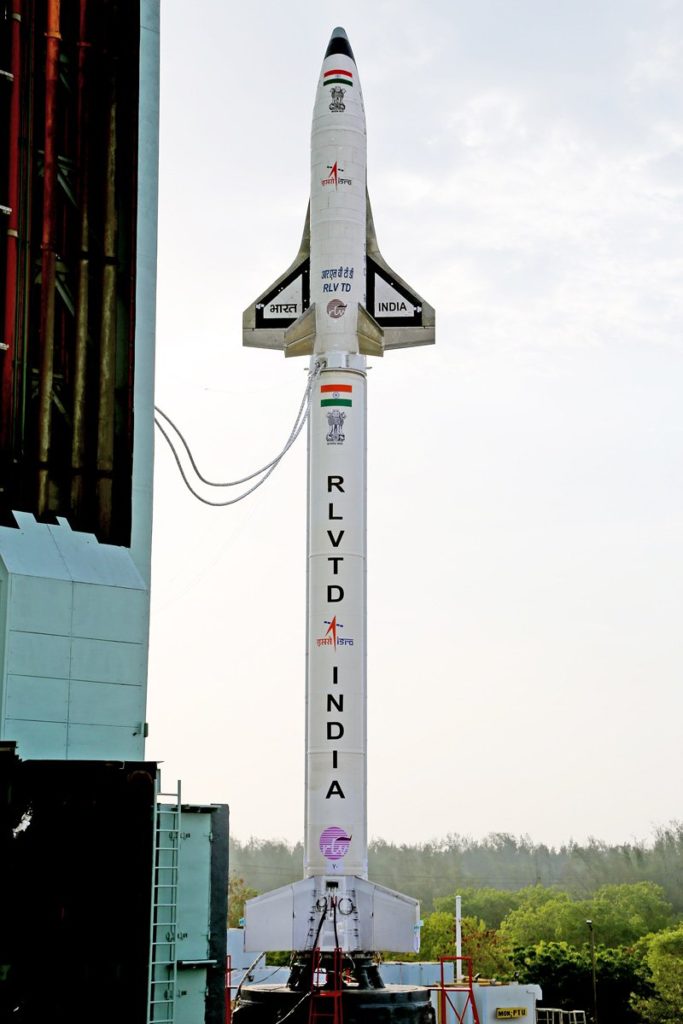
The Beautiful ISRO reusable launch vehicle RLV.
Credits : ISRO
This technology demonstrator was boosted to Mach no: 5 by a conventional solid booster (HS9) designed for low burn rate. The selection of materials like special alloys, composites and insulation materials for developing an RLV-TD .
The crafting of its parts is very complex and demands highly skilled manpower. Many high technology machinery and test equipment were utilised for building this vehicle.
RLV-TD was successfully flight tested on May 23, 2016 from SDSC SHAR Sriharikota validating the critical technologies such as autonomous navigation, guidance & control, reusable thermal protection system and re-entry mission management.
ISRO Scramjet engine
ISRO plans to add a scram jet engine to the RLV. The Reusable launch vehicle will likely use this to add to the thrust during takeoff.
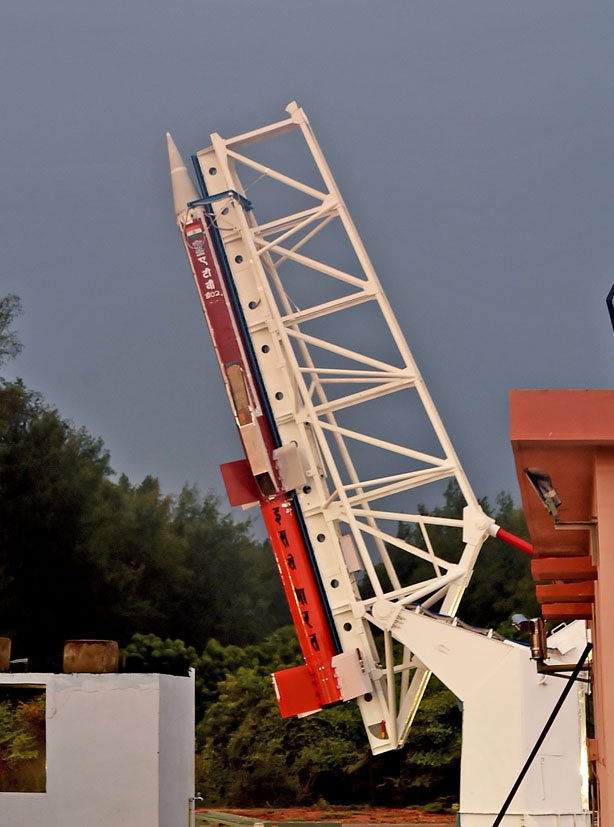
ISRO scramjet engine mounted on a Advance Technology Vehicle .
Credits : ISRO
The Scram jet engine designed by ISRO uses Hydrogen as fuel and the Oxygen from the atmospheric air as the oxidizer. This test was the maiden short duration experimental test of ISRO’s Scram jet engine with a hyper-sonic flight at Mach 6.
ISRO’s Advanced Technology Vehicle (ATV), which is an advanced sounding rocket, was the solid rocket booster used for the test of Scram jet engines at supersonic conditions. ATV carrying Scram jet engines weighed 3277 kg at lift-off.
Read : ISRO developing Super heavy lift vehicle capable of 16 Tons
ISRO Reusable Rocket Stages
ISRO recently admitted that it is conducting research on Reusable Rocket stages .In his video message for the annual National Conference on Emerging Trends in Aerospace Technologies (ASET-2018) on future of propulsion at Liquid Propulsion Systems Centre (LPSC) Valiyamala in Thiruvananthapuram District of Kerala, ISRO chairman said,
“The latest in propulsion including electric, hybrid, cryogenic and nuclear power propulsion system is being developed indigenously at LPSC”. The attempt is to control the engine thrust to explore all landing modes including vertical and soft landing of launch vehicles, so that it can be reused, he added.
Controllable engines
If ISRO plans to propulsively land a rocket stage it will need an immense amount of control. The engines needs to be able to control thrust from minimum to maximum. All of this has to happen fast and accurately.
K Sivan recently revealed they are developing engines with the ability . The engines will be Semi Cryogenic . ISRO is testing various forms of propulsion for reusable launches ,
ISRO vs SpaceX
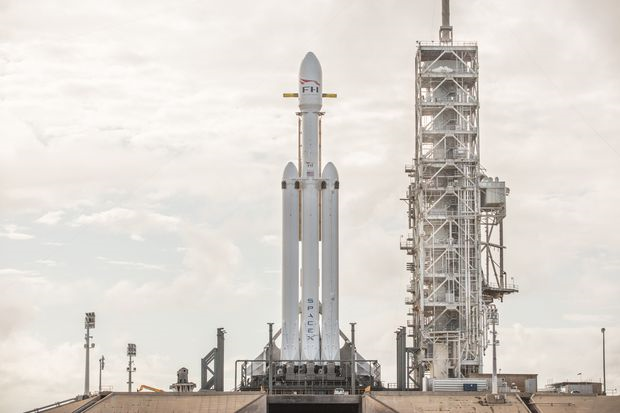
Source: SpaceX
ISRO already has one of the cheapest launch rates in the world . SpaceX with its reusable falcon 9 Rocket also has relatively cheap launch rates.
Although this might change soon with SpaceX introducing the Block 5 Falcon 9. It is meant to be reused at least 10 times before refurbishment. this could significantly lower the cost of launch .
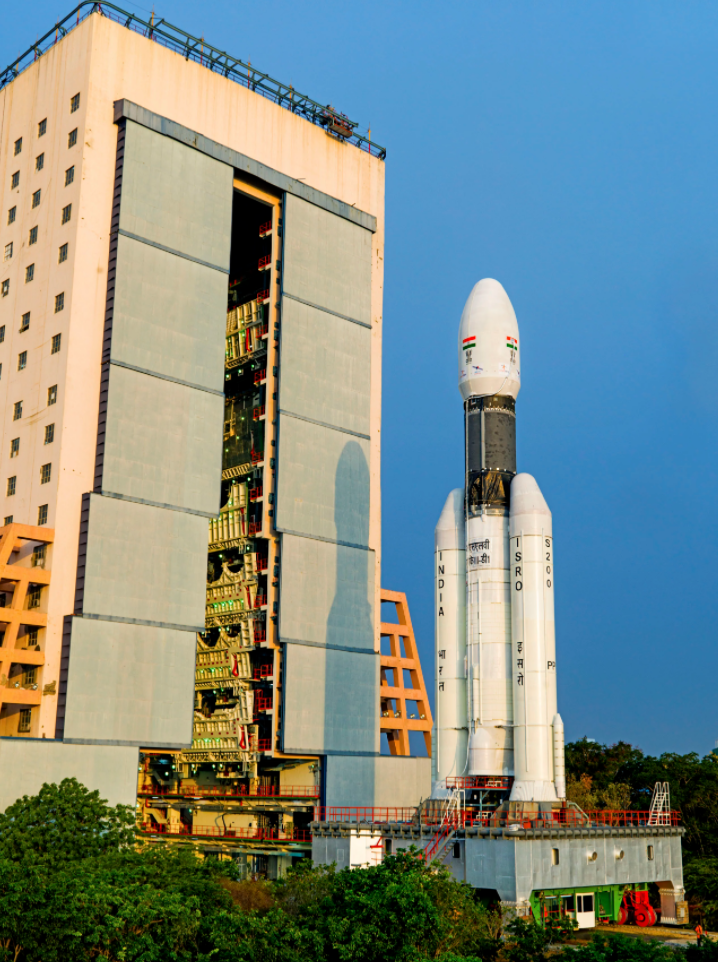
ISRO’s beast! The GSLV Mk3
Although, ISRO’s chairman, in February, had already said that ISRO’s priority is to increase the lifting capability of GSLV Mk III (ISRO’s ‘fat boy’ in image on top) from 4 tonnes to 6.5 tonnes.
ISRO is increasing the lifting capability so that India’s dependency on the European spaceport, for launching our heavier satellites weighing over 6 tonnes, could be ended. ISRO’s Budget currenly stands at around 10.7k crore rupees or 1.6 billion dollars approx.
But ISRO has to build satellites from that money while developing research Missions .How this scene pans out will be interesting to watch in the future. The future of ISRO is definitely interesting .
So do you like to read such articles , consider liking our page on Facebook here , following us on Twitter here ,or if you love some visual treatment , we make some high quality videos on YouTube as well which you can view here . have a great day :). Visit our homepage HERE for the LATEST SCIENCE NEWS.
